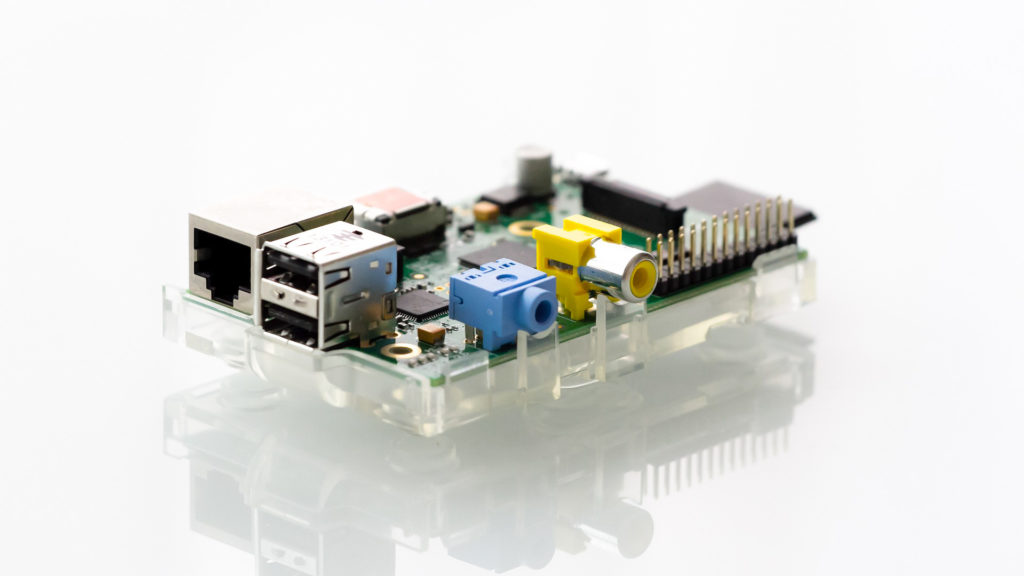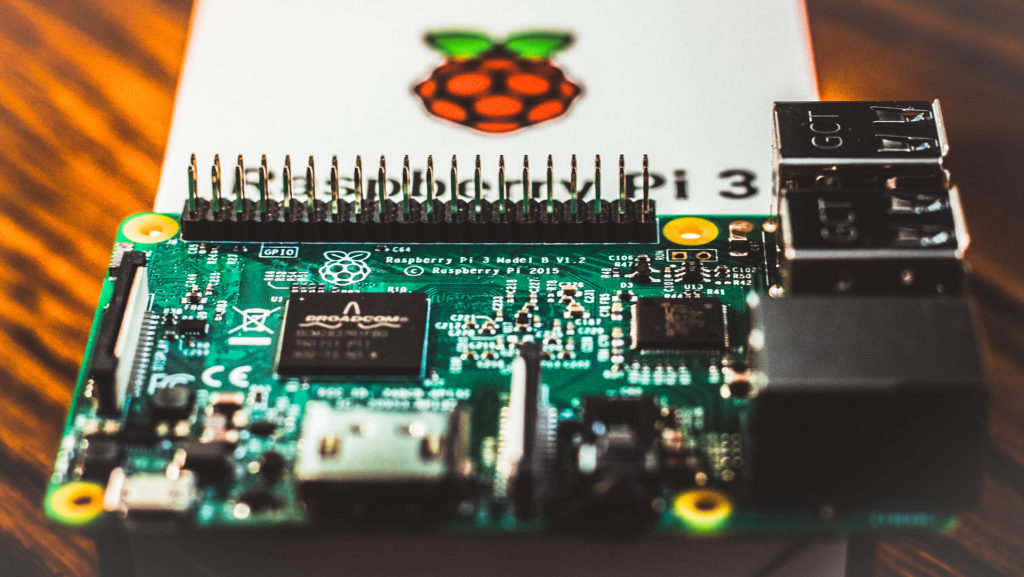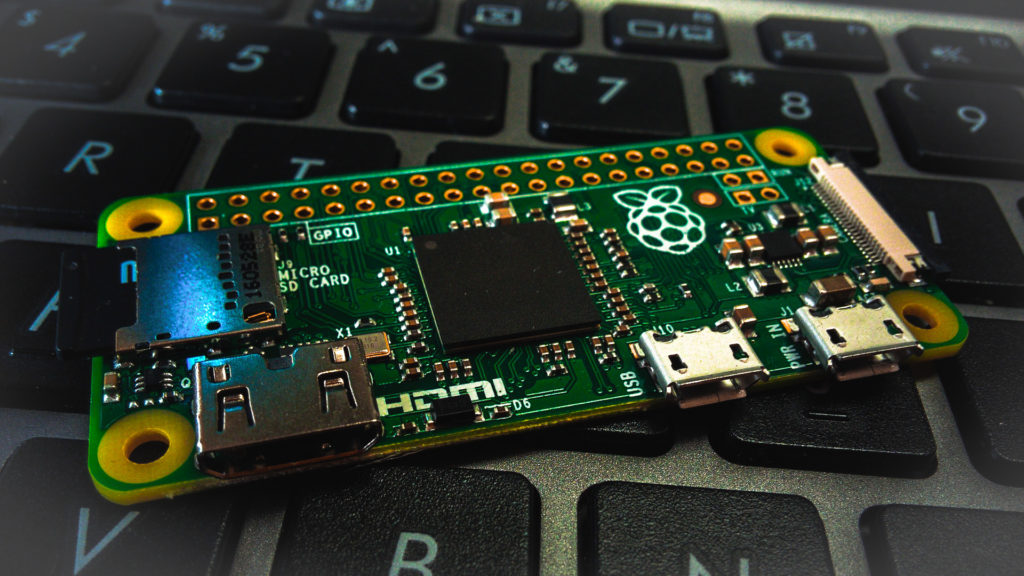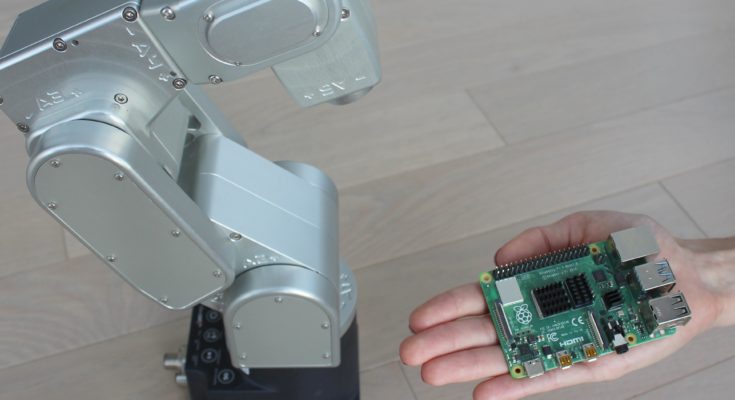We now support Raspberry Pi! But, what is a Raspberry Pi? Should you use one? Is it really good for robot programming? Let’s find out.
The Raspberry Pi has produced a quiet revolution over the past 7 years. At the simplest, it is a tiny, low-cost computer the size of a credit card which was designed for educational purposes. But, it’s so much more than that.
The latest version of RoboDK now supports Raspberry Pi for the first time! You can now use the power of this impressive little computer for offline robotic programming and simulation.
What does a small computer have to offer you? The repercussions of such a simple device are often difficult to predict. If you are familiar with the Arduino, the Raspberry Pi has done for high-level computing what the Arduino has done for low-level electronics. It has allowed anybody to design and build their own embedded computer systems. This simple feature has led to an impressive and endless stream of innovative projects over the last 7 years both by hobbyists and within industry.
RoboDK+Raspberry Pi combo may mostly be used for education purposes. However, it is likely that there will be far more applications than we could have ever imagined!
What is the Raspberry Pi?
The Raspberry Pi is basically a single, credit-card sized computer. It has an ARM/Broadcom SoC (System on Chip) with a GPU, RAM and both wireless and wired connectivity options.

In one way it’s that simple: Raspberry Pi is just a tiny computer.
But, in another way, it’s not that simple at all. Raspberry Pi is a highly-flexible platform that gives you the power to build whatever you want to build.
Raspberry Pi Models
I first got my hands on a Raspberry Pi back in 2012 when the first model was released — the Model B which had 512Mb of RAM and a 700MHz clock.
Since then, there have been various models, each time with more impressive features.
Here’s how the models are compatible with RoboDK:
- Model 2 and earlier — These are probably not compatible with RoboDK. Their processors are less than 1GHz and they have 1GB or less of low power DDR2 RAM.
- Model 3B+ — Released in 2018, we have tested this model with RoboDK and found it to work well. It has a 1.4GHz processor and 1GB DDR2 RAM. Note that the smaller Model 3A+ (which was also released last year) only has 512MB RAM, which probably isn’t enough.
- Model 4 — The newest model is and a significant step up from previous models. It has a 1.5GHz processor and the options of either 1GB, 2GB or 4GB RAM. It is also the first Raspberry Pi to include a VideoCore VI GPU which can boost the graphics frame rate by double compared to the Model 2.

Which Model is Best for RoboDK?
If you’ve not invested in a Raspberry Pi yet, the Model 4 is probably the best option. RoboDK does work with lower specification machines, but its capabilities scale with your computing power. If you want to be able to handle more complex robotic projects and speed up computation time for features like motion planning, this higher specification board is probably the best option. Note that as it’s a brand new board, there may be a wait for your order for some variants.
Industrial Raspberry Pi
Despite being originally targeted at educational uses, the Raspberry Pi is now used in many industrial applications. There is even a dedicated module — called ComputeIO — which is specifically targeted at industrial uses. It is a smaller form-factor than the full-sized Raspberry Pi and has undergone compliance testing for European industrial standards.
As an example, Kunbus is an Open Source Industrial Computer (IPC) based on Raspberry Pi.
Is Raspberry Pi Really Good for Robot Programming?
You might be wondering if such a small computer can really be useful for robot programming. After all, you can run RoboDK on a desktop computer or a laptop…
What would be the purpose of using the Raspberry Pi for offline programming your robot?
It’s a tough question to answer. As with every other Raspberry Pi project that we’ve seen over the years, the only limit to what you can do with the machine is your imagination. If you can think of an application, you can probably achieve it with the Raspberry Pi.

Example project ideas might include:
- Using the Raspberry Pi as a dedicated robot programming station which doesn’t require another computer.
- Incorporating sensors into your robot programming (e.g. vision sensors) which are not compatible with the robot controller.
- Setting up a low-cost robot training center with various Raspberry Pis so that several people can learn robot programming at the same time.
- Incorporate AI into your robot applications for research purposes.
- Using the RoboDK API to drive robots automatically from the Raspberry Pi.
The best way to get the most use out of RoboDK and Raspberry Pi is to get your hands on both of them and try them out for yourself.
Who Will Use Raspberry Pi + RoboDK
As mentioned above, we imagine that a lot of the uses of this new version of RoboDK will be educational. However, we are expecting that there will be many more uses.
Here are some users who we think might find the Raspberry Pi version useful:
- School and university teachers — It’s a low-cost way to use RoboDK in a classroom environment.
- Industrial applications — Some Industrial Computers (IPC) are based on Raspberry Pi hardware/software.
- Robotics clubs — It’s a way for the club to get started with offline programming without having to invest big in computers.
- Early-stage start-ups — It’s a cheap way to get started with robot programming.
- Industrial researchers — It allows engineers to test out robotic applications with a self-contained, low-cost system.
- You? — We are interested to hear how you could use the Raspberry Pi and RoboDK for your projects!
What could you do with a Raspberry Pi and RoboDK? Tell us in the comments below or join the discussion on LinkedIn, Twitter, Facebook, Instagram or in the RoboDK Forum.




